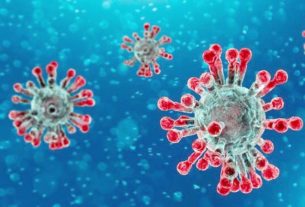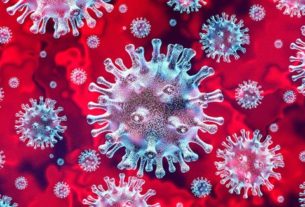From Our Bureau
14TH AUGUST 2020
The Corona Virus (COVID-19) pandemic situation remained grim globally, with the confirmed cases across the world soaring to 2,07,30,456 and the death toll rising to 7,51,154 in the 216 affected countries and territories, according to the latest update from the World Health Organization (WHO).
Globally, American region continued to be the worst-hit with 1,11,09,443 confirmed cases and 4,02,734 deaths. Europe came next with 37,02,640 confirmed cases and 2,18,662 deaths. South-East Asia region’s tally stood at 29,00,347 confirmed cases and 57,756 deaths.
Eastern Mediterranean region reported 16,96,890 confirmed cases and 45,004 deaths. African region registered 9,25,297 confirmed cases and 17,904 deaths. Western Pacific region recorded 3,95,098 confirmed cases and 9,081 deaths. WHO Risk Assessment at global level remained very high.
Starting this coming Monday, 17th August, the daily situation report will be replaced by a “COVID-19 Weekly Epidemiological Update” which will focus on analysis and interpretation of the evolving epidemiological situation.
All quantitative data will continue to be updated daily on the global COVID-19 dashboard, covid19.who.int. Important narrative updates will appear on the “Rolling updates” pages. Operational updates will continue to be shared through the “Weekly Operational Update on COVID-19.”
In many countries, the response to the COVID-19 pandemic has incorporated lessons from other disease approaches, such as the work to protect communities against Ebola virus disease. In Nigeria’s Niger Delta, health workers have unified their surveillance strategy to improve the detection and reporting of infectious diseases such as measles, yellow fever, and COVID-19.
Today’s ‘Subject in Focus’ highlights updated guidance on home care for patients with suspected or confirmed COVID-19 and the management of their contacts. The document provides guidance on the issues to be considered when deciding whether or not to provide care for COVID-19 patients at home and offers advice for health workers and caregivers providing that care.
Subject in Focus:
Home care for patients with suspected or confirmed COVID-19 and management of their contacts
On 13th August 2020, WHO updated guidance for the provision of care for patients with COVID-19 in a home setting. This replaces the previous version of the guidance published on 17th March 2020.
This guidance was updated to align with recent updates to WHO surveillance case definitions for COVID-19 and WHO guidance on clinical management for COVID-19. It has also been expanded to include implementation aspects as well as considerations to identify and support patients who could receive care at home, and the infection, prevention and control (IPC) requirements for suitable and safe home care of people infected with SARS-CoV-2, the virus that causes COVID-19.
As this virus continues to spread and health systems struggle to find capacity to provide care, some people with COVID-19 may be cared for at home. The needs of the patient, the caregiver, the household and community must all be considered when the decision to provide care for someone infected with SARS-CoV-2 at home is made.
WHO has provided updated guidance to policy makers and health professionals to assess the ability to safely provide care for COVID-19 patients in the home setting and to support it with adequate tools, equipment, resources and instructions.
Ideally, all patients with COVID-19 should be cared for in a health facility, but there are specific situations where they may be cared for safely at home. The guidance outlines several factors that should be evaluated by the health care provider when determining if a patient with COVID-19 can be cared for at home.
These include the patient’s clinical condition and presence of underlying medical conditions, which put them at a higher risk for developing severe disease, an evaluation of the home setting to ensure IPC and other requirements can be met (such as basic hygiene and adequate ventilation), the ability of the caregiver to provide care and recognize when the patient may be deteriorating, adequate support for the caregiver (e.g., food, supplies, psychological support) and support of a trained health worker in the community.
If specific requirements cannot be met, then alternative arrangements should be discussed with the patient and caregiver, such as isolation in an alternate or repurposed facility where available.
Within the updated guidance, WHO provides specific advice for health workers and caregivers providing or supporting care in a patient’s home, including IPC measures to be taken to protect the health worker or caregiver and prevent transmission of the COVID-19 virus.
In addition, a new annex on the implementation of home care policies and guidelines, which was developed with input from social sciences experts, provides some practical examples of approaches towards ensuring patients, family, community and health workers have the necessary supports, resources and communication to safely provide care in the home setting. (eom)



